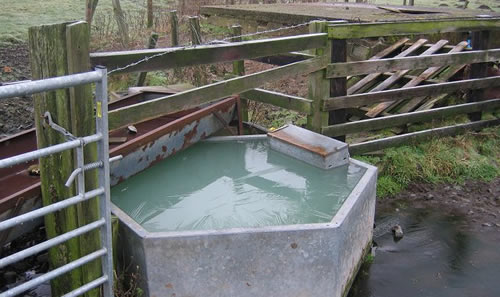
Natural England has updated its guidance to farmers whose ability to feed and house their livestock has been hampered by the recent freezing weather conditions. The advice covers the restrictions on feeding and stocking rates that would normally apply to farmers in agri-environment schemes (AES).
1. Where snow is still lying on the ground
Farmers in agri-environment schemes which normally impose restrictions on supplementary feeding will be able to give their livestock additional feed to help maintain animal welfare during the cold period. This is a temporary relaxation and is effective for the duration of the severe cold weather.
Wherever possible, land not under agri-environment land management options should be used first for supplementary feeding. Where this is not possible and agri-environment land is used for supplementary feeding, the following advice may be useful:
• Supplementary feeding areas should be moved whenever possible
• Any leftover forage should be completely removed to reduce damage to the sward after the snow has thawed
• Feeding on archaeological features should be avoided
• On moorland and common land, where landowners restrict the practice of supplementary feeding, graziers should consider whether to inform them of their intention to feed during this period of adverse weather
• Farmers on SSSI-designated land should contact their Natural England adviser before undertaking supplementary feeding.
Supplementary feeding may continue for four days after the snow has cleared but should then cease, even if the ground remains frozen.
Under normal circumstances farmers and land managers are required to contact Natural England prior to undertaking any activity which is not part of their agri-environment agreement.
On this occasion, however, it is not necessary for farmers to contact Natural England for permission for supplementary feeding.
2. Where buildings are damaged and stock can’t be housed or feed can’t be stored
If no other stock housing is available this constitutes force majeure and the animals can be fed on land under an agri-environment agreement until 15 May 2011. Please contact your Natural England adviser to discuss a derogation to agree how and where the stock will be fed for the remainder of this winter to reduce the impact on the natural environment.
In these cases Natural England will agree to supplementary feeding and variations to stocking levels and timings with the following conditions:
a) Manage any supplementary feeding sensitively to avoid damaging habitats such as blanket bog, heather, bilberry and other heath, species-rich grassland and mires.
b) Move all feeding sites regularly to minimise damage to vegetation and soils.
c) Feeding silage is permitted, provided that all waste and plastic is removed from the feeding sites and disposed of in a sensitive manner.
d) Do not feed on or next to archaeological features, steep slopes, footpaths or watercourses.
e) The practice of supplementary feeding and/or stocking rates may be restricted under the terms of a statutory designation e.g. SSSI. It may also be restricted on common land by the landowner or by custom as declared by a Commoners Association or group – these restrictions take precedence over any derogation.
For land under Uplands ELS please note that in cases of force majeure the compulsory management requirements UX2 and UX3 must still be adhered to.
This relaxation of rules regarding supplementary feeding on land under agri-environment schemes does not override any requirements set out under cross compliance for Single Farm Payment purposes.
3. Where fencing has been damaged (by melt/flood water, or cut for access to woodland or for livestock to get to water)
If this fencing has been funded through an AES it must be reinstated as soon as a) drinking water is available for stock away from the watercourse or b) the waters recede. This work should be at the expense of the agreement holder and to the standard stated in the agreement or BS 1722.
Anyone seeking further information should contact their local Natural England office.
